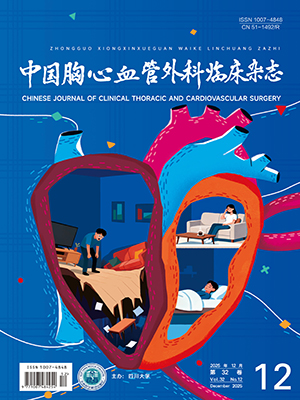Objective To observe the impact of collagen patches using 1-ethyl-3- (3-dimethylaminopropyl) carbod-iimide hydrochloride chemistry (EDC) to conjugate vascular endothelial growth factor (VEGF) + basic fibroblast growth factor (bFGF) or VEGF alone on the survival rate of transplanted human bone morrow mesenchymal stem cells (hBM-MSCs)in vitro and in vivo. Methods Collagen patches which were activated by EDC were used as the control group,and EDC activated collagen patches that were conjugated with VEGF or VEGF + bFGF were used as the experiment groups(VEGF group and VEGF + bFGF group). hBM-MSCs (0.5×106/patch) were used as seeding cells to construct engineered heart tissue (EHT). MTT assay was performed to assess in vitro proliferation of hBM-MSCs on 3 different collagen patches. Ventricular aneurysm model after myocardial infarction was created by left anterior descending artery (LAD) ligation in male SD rats,and EHT which were constructed with 3 different patches were used for ventricular plasty. Four weeks later,immunofluorescence staining was used to examine arteriole density (anti-α-SMA staining) and transplanted cell survival (anti-h-mitochondria staining). Results (1) hMSCs proliferation in VEGF group and VEGF + bFGF group was significantly better than that in the control group on the 2nd and 4th day after cell transplantation (P<0.05); (2) Four weeks afterEHT implantation,immunofluorescence staining for α-SMA revealed that arteriole density of VEGF group and VEGF + bFGF group was significantly higher than that of the control group (P<0.05); (3) Immunofluorescence staining forh-mitochondria showed that survival rates of transplanted hBM-MSCs of VEGF group and VEGF + bFGF group were significantly higher than that of the control group (P<0.05); (4) There was a significantly positive correlation between survival rate of hBM-MSCs and arteriole density (r 2=0.99,P=0.02). Conclusion VEGF or VEGF + bFGF conjugated collagen patch can significantly improve hBM-MSCs proliferation in vitro and enhance survival rate of transplanted hBM-MSCs by accelerating revascularization of EHT in vivo.
Citation: KANG Kai,QU Hui,TANG Jiquan,XIE Baodong,JIA Zhibo,ZHANG Yunan,WU Hua,LIRenke,JIANG Shulin.. Growth Factor-conjugated Collagen Patch Prolongs Survival Rate of Transplanted Cells after Ventricular AneurysmRepair in Rats. Chinese Journal of Clinical Thoracic and Cardiovascular Surgery, 2013, 20(4): 451-456. doi: 10.7507/1007-4848.20130136 Copy
Copyright ? the editorial department of Chinese Journal of Clinical Thoracic and Cardiovascular Surgery of West China Medical Publisher. All rights reserved
-
Previous Article
頸部開放性血管損傷的救治 -
Next Article
老年結直腸癌患者的術后護理和衛生服務需求:一項基于人群的研究




